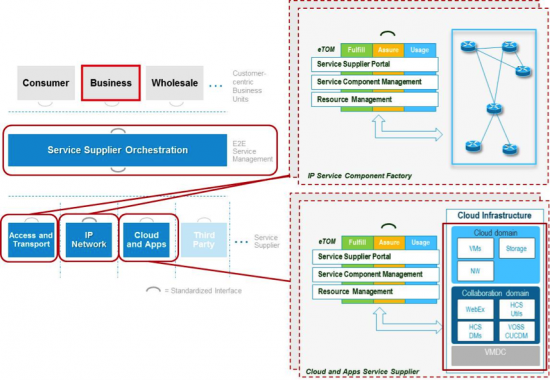 Written by Tom Davies, Technical Solutions Architect
Written by Tom Davies, Technical Solutions Architect
The world can be a tough place for a service provider in today’s marketplace. Revenue per customer is declining and margins are shrinking. Over-the-top players are delivering services at an ever increasing pace and systems integrators are positioning themselves as end-to-end providers of complex services. It is a potent mix that is negatively affecting the top line growth of many providers.
From discussing these key business issues with numerous service providers, the desire and will to offer new and innovative services on cutting edge technology cannot be doubted. Unfortunately, service providers have large legacy networks to consider, with a multitude of Element Management Systems, Network Management Systems and Operational Support System stacks, which tend to be customised to manage the specific networks and the services that reside on them. These stacks can present a bottleneck to offering new services and adopting new and disruptive technologies in terms of time to market, capital cost and the operational expenditure to deploy and manage them.
Service providers find themselves with reduced top line growth opportunity and stifled capability to affect bottom line efficiency gains.
For many service providers this is provoking an immediate sense of urgency to change; to become more adaptive and agile to market demand and direction. To be able to:
- Rapidly introduce new IP/cloud-based communications, collaboration and entertainment services
- Quickly adapt to changing market environments through service innovation
- Easily integrate third party capabilities into service offerings to gain strategic and economic advantage
It is becoming essential that service providers move to a more Agile Business Architecture. An architecture that provides a flexible, modular approach to quickly support and manage new and existing service offerings, using a technology agnostic approach, while all the time reducing the complexity of fulfilling and assuring services and the time to get new offerings to market.

An Agile Business Architecture enables service providers to actively pursue the latest technologies without fear of time and cost repercussions. It will increase the strategic options open to the service provider when choosing technology partners. It will dramatically simplify business and operational processes when managing the service portfolio toward which a provider wishes to pivot its business.
In short, an Agile Business Architecture will erode the barriers for service providers who wish to offer new, innovate services upon existing or disruptive technologies, improve bottom line revenues with increased business efficiency and re-invigorate the ability to capture customer spend driving top line growth.
In today’s world, agility is becoming a core component in the service provider’s business acumen.
To learn more about this business architecture approach for achieving and maintaining agility, the high-level transition process and specific benefits, check out our new white paper:
The Agile Service Provider: Breaking the Barriers to Offering New Services and Technologies

CONNECT WITH US